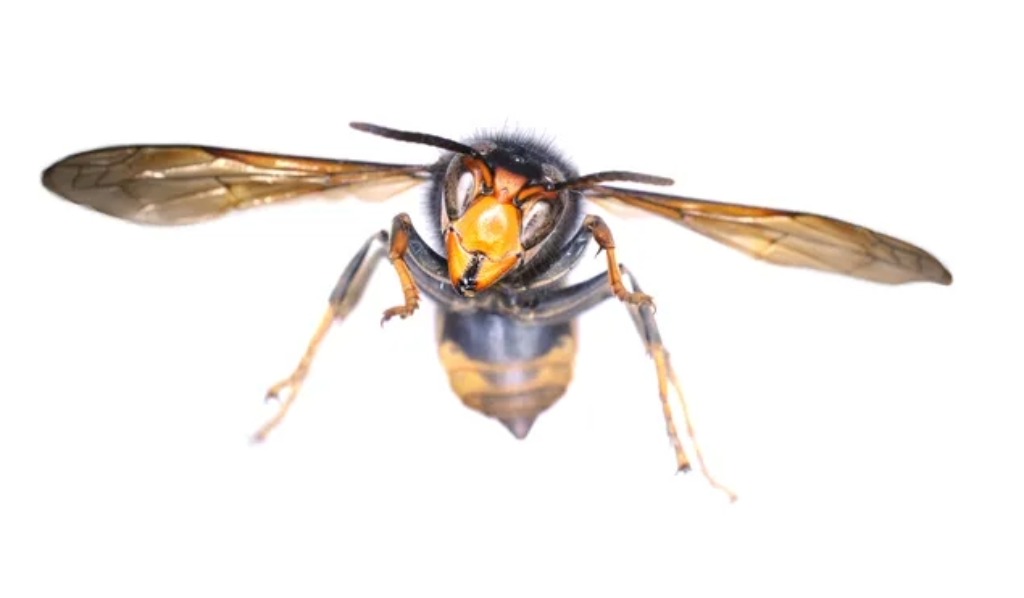WARNINGS have been issued after an Asian hornet was sighted in Northern Ireland for the first time.
The insect was captured in the Dundonald area of Belfast on October 10 by a member of the public, the Northern Ireland Environment Agency (NIEA) has confirmed.
Also known as Yellow-legged hornet, the invasive species is native to southeast Asia, but was first recorded in Europe in 2004.
 An Asian Hornet was spotted in Belfast (Pic: A. O'Hanlon, National Museum of Ireland)
An Asian Hornet was spotted in Belfast (Pic: A. O'Hanlon, National Museum of Ireland)In August of this year two Asian hornet nests were located in Co. Cork in southern Ireland.
“The species is a highly effective predator of insects including honeybees, wasps and other important pollinators, such as hoverflies,” the NIEA said this week.
“Due to its aggressive nature and feeding habits, it could have a serious impact on native insect biodiversity and on pollination services more widely,” they warned.
A monitoring programme is now underway to determine if the finding in Belfast is an isolated incident or whether there may be a nest.
“If other Asian hornets are detected and confirmed, intensive monitoring will continue to trace and remove any nest, with monitoring afterwards to ensure that there is no further Asian hornet activity,” an NIEA spokesperson said.
“NIEA officers are being assisted by colleagues from the National Biodiversity Data Centre, as part of the Shared Island Biosecurity and Invasive Species Initiative, benefiting from the practical experience they have gained from recent Cork and Cobh incursions,” they added.
Northern Ireland’s Minister for Agriculture, Environment and Rural Affairs, Andrew Muir said he “does not wish” to see this “harmful species becoming established in Northern Ireland” as it “presents a serious threat to both biosecurity and local ecology, particularly valuable pollinating insects”.
“On current evidence this is a solitary Asian hornet, but a Departmental response is underway to ensure that no other Asian hornets are present,” he explained.
“I am grateful to the Dundonald householder who captured and reported the Asian hornet and would urge the public to remain alert to the potential presence of this insect,” he added.

